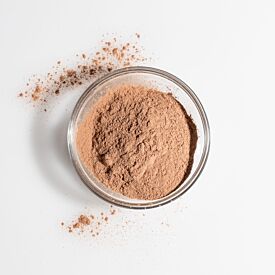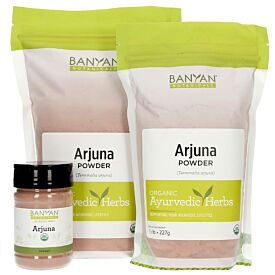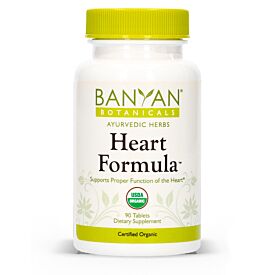Ayurveda’s RPM: the Channels of Love
In common discourse, RPM stands for “revolutions per minute”—a measurement applied to machines and cars to gauge their efficacy and productivity. While that definition seems to have little to do with Ayurveda, there is something to the notion of revolving in how we consider the interplay of the physical and energetic channels of the heart.
Like the earth orbiting the sun, the revolution of life is centered around the axis of our heart, its steady rhythm circulating love throughout our entire being.
We are living in a time when so many things tempt and threaten to pull us out of that orbit. Ayurveda reminds us of the simple truth that in feeding our senses with high-quality food and sensory input, we won’t drift far from the light, clarity, and freedom that resides in our hearts.
Tending to our own inner RPM with intention and care will result in a greater capacity to give and receive love—with ourselves, each other, and the earth upon which we live.
How Digestion Leads to Love
They say that the way to a person’s heart is through their stomach—a cliche that, when considered carefully, may have its roots in Ayurveda. A fundamental principle of Ayurveda describes life as a triptych—the combination of mind, body, and spirit—with the health and longevity of all three parts being essential to a purposeful and love-filled life.
Each of these parts of us needs regular food in order to stay alive, which Ayurveda says goes beyond the food we cook, bite, chew, and swallow. All the information we take in through our senses requires digesting, which is why maintaining a strong agni, or digestive fire, is at the heart (pun intended) of so many of our daily routines and treatments for imbalances.
In describing the purpose and process of digestion, Ayurveda offers an elegant breakdown of how what we ingest makes its way through the body to the seven tissue layers, or dhatus. After a 35-day cycle, our sensory inputs eventually get turned into ahara rasa, or “food juice.”
This substance is the building blocks of the dhatus, and what’s left after they take their nourishment is distilled into ojas—our vitality and endurance, and the subtle essence of kapha dosha, the elemental combination of coherence, connection, and nourishment. Ayurveda leader Vasant Lad, MASc, describes how:
Mobility and stability go together in para ojas [the more refined version of ojas]. There is freedom and freedom is love, freedom is awareness. Therefore, awareness is love. Awareness is an all-inclusive state of consciousness. It is expansion. Therefore, love is expansion and selfishness is contraction. The moment one becomes selfish, one contracts the mind. This contraction dries ojas. Awareness enhances ojas, because para ojas becomes awareness.
It might take a few reads to get the full gist of this line of reasoning (at least it did for me), but ultimately what Lad suggests is that ojas, the end-product of digestion, is a form of love.
While Ayurveda offers a wide menu of foods to feed our three-part self with love, it’s important to think beyond the substance, or “what,” of our nourishment to ensure we benefit from its goodness.
We need to think about the process, or “how,” of its movement through the body, such that the foods we take in actually make it to their intended destination, into the dhatus and eventually into ojas.
For this, we can look to the actual pathways of physical and energetic matter, or srotaṁsi, and their equally elegant connections.
Ayurveda's RPM: Rasa, Prana, Manas
According to Ayurvedic anatomy, a srotas refers to a bodily channel, passage, or pathway, and srotaṁsi refers to more than one srotas. These channels include external pathways (bāhya) for elimination and consumption as well as internal channels to circulate ahara rasa and other substances such as blood, nutrients, and waste.
The internal srotaṁsi all have a root, pathway, and opening, and when we puzzle together all the roots and openings, with the bāhya, we can see a completely coherent and beautiful system of digestion and elimination. In the roadmap of the srotaṁsi, there are no dead ends.
While discussions of the srotaṁsi can become as meandering as the channels themselves, we will focus here on the three srotaṁsi that circulate the nourishment that is most vital to life: rasa, prana, and manas. Or as I like to call it, RPM, the “Ayurvedic trifecta.”
- Rasa comes from our edible foods; it can be thought of as the lymph or plasma, the liquid, essential part of our circulatory system, as well as the juicy, tasty, pleasurable parts of life (“rasa” means “juice,” “sap,” or “flavor”). Rasa is the first step in the formation of ojas, so high-quality rasa means high-quality ojas.
- Prana circulates vitality through our energetic and spiritual body. Much more profound than the oxygen in the air we breathe, prana carries with it energy, intelligence, life-force, and vibration.
- Manas comprises our mental body—our thoughts, consciousness, sensory inputs and outputs, communication, and sense of identity. Manas is somewhat akin to the nervous system, but per Ayurveda, it plays a much more fundamental role in governing our physical, emotional, and spiritual needs, our actions and decisions, and our sense of purpose.
We can turn to the roots, channels, and openings of these srotamsi for an explanation of how they work together on both physical and energetic levels. The mano vaha strotas, or channel of the mind, is said to circulate consciousness through the pathways of the whole body, including the sushumna nadi, the central energetic pathway that moves out of our body through the crown of the head into the etheric realm.
Its exit points are (surprise, surprise!) the sense organs themselves and the marma points. And its root is in the heart, pointing to the deep wisdom that resides in that physical and metaphysical organ—the ability to discern truth, to live in integrity with nature, and to know love not just as romantic love, but as freedom, awareness, and expansion.
Guess what other srotamsi have their root in the heart? Rasa vaha srotas and prana vaha srotas— the channels of rasa and prana.
The heart is our doorway into the mind, body, and spirit, where we generate our most precious form of ahara rasa—ojas, vitality, and love.
How to Support Rasa, Prana, and Manas
Because the srotamsi are not solid, tangible substances—particularly these three—the way to support their function won’t always be in the form of edible foods. We must look beyond the stomach as the pathway to the heart, and instead to the pathways offered by the trifecta. Here are three routes to supporting your RPM, to circulate as much love as your divine being is blessed with:
Support Rasa with a Heart-Healthy Diet
While there’s no one-size-fits-all Ayurvedic diet, an abundance of research offers some guidelines for foods that support cardiovascular health.1 A combination of local, organic produce, plant-based protein, whole grains, and minimal animal products generally aligns with the Ayurvedic perspective on balanced, sattvic eating.
When we’re talking about the spiritual heart there are a few other factors at play as well. Certain foods, herbs, and spices have the ability to connect directly to our RPM, as well as build high-quality and abundant ojas. The properties of the foods below have unique ways of supporting the heart.
- Cardamom: Cooling and grounding, cardamom supports all three doshas, respiration, and agni, and reduces acidity for a balanced heart energy. Its sweet and refreshing fragrance can eliminate bad breath as well, meaning cardamom may just bring you close to others on many levels!2
- Nutmeg: Promotes healthy sleep and supports agni and liver function. Its affinity for the nervous system makes it a potent sedative, and as an aphrodisiac, it nourishes the reproductive tissue and supports fertility. It is both a rasayana (rejuvenative) and hrdaya (heart tonic), and the Sanskrit name of one of its varieties means “intoxicating fruit.”3
- Tulsi: A goddess-manifest as a plant, tulsi is a powerful adaptogen, rasayana, and support for the respiratory and immune systems. It is sattvic in nature, with an ability to balance kapha and elevate the spirit. It has an affinity for the lymph, blood, and reproductive tissues from which ojas precedes, as well as for the spiritual heart.4
- Turmeric: A well-known herb, turmeric is a virtual panacea for systemic health. It works to boost overall circulation and immune health, bring comfort to the bones and soft tissue, move stagnation, support the liver, warm the complexion, and clear the channels of the heart.5
- Saffron: With an affinity for lymph, blood, and reproductive tissues, this striking flowering plant moves blood while also supporting feelings of love and compassion in the heart. It is a rasayana, an aphrodisiac, and sattvic, meaning it offers stimulation and nourishment in cases of depletion.6
- Dates: A food of the gods, dates embody ojas and sattva with their dense, moistening, and sweet properties. Their chemical compounds also support female reproductive tissue.
- Ghee: The unique action of this Ayurvedic staple is its simultaneous ability to cool the system while also stimulating agni. Ghee will enhance the properties of whatever herb it is combined with, which is why it is often used as the base for herbal formulas.
Try this recipe for a heart-nourishing treat, especially lovely in the evening before bed.
Ojas Milk Recipe
- 1 teaspoon tulsi powder
- ½ teaspoon cardamom powder
- ½ teaspoon turmeric powder
- ¼ teaspoon ground nutmeg
- 1–2 Medjool dates, pitted, chopped, and soaked overnight
- 1 cup almond milk
- 1 teaspoon ghee or coconut oil (for a vegan option)
- A few threads of saffron
Combine the tulsi, cardamom, turmeric, nutmeg, dates, almond milk, and 1 cup water in a medium saucepan. Bring to a boil on medium heat, then reduce the heat to maintain a simmer for 8–10 minutes.
Remove from heat and blitz with an immersion blender or upright blender. Pour into your favorite mug, stir in the ghee or coconut oil, and top with the saffron. Sip in a calm place, holding the mug with both hands.
Support Prana with Breath
The art of pranayama can have powerful effects on the circulation of the air element through the body. When the internal atmosphere gets hit with too much or not enough wind, or if the air is confused or blocked, the resulting stagnation may obstruct our connection to the heart.
Breathwork can help remove mental and physical obstructions, providing a deep connection to the anatomical and spiritual heart.
While some pranayama practices are best guided by an experienced teacher, practices like Nadi Shodhana (Alternate Nostril Breathing) are simple ways to connect to the pranavaha srotas and ensure it remains open and supple.
Simply observing your breath in meditation or breathing deeply into your belly will also have a profound effect on your ability to be with yourself and others in integrity, digest your food well, and move comfortably in body, mind, and spirit.

Support Manas with Simplicity
We live in an age when few can complain about a lack of information. Our phones, computers, televisions, and other devices keep us “on” for a large part of the day, consuming our mental energy often faster than we can replace it.
Nourishing the manovaha srotas isn’t necessarily about learning a new skill, reading a book, or going back to school. Often, our contemporary minds will benefit most from the medicine of subtraction, as Ayurveda practitioner Dr. Claudia Welch describes it—a reduction of stimuli such that we can experience what we take in with fuller awareness, and therefore feel more connection to our hearts.
Pratyahara is a yogic concept of “withdrawal of the senses,” which can be interpreted in many ways. Some of the simplest ways to practice it are taking a break from screens, spending time in nature and in good company, and engaging in mindfulness practices like meditation, self-care, and sleep.
Withdrawing from the bright lights of the external world may take some effort at first, but remember that there is an infinite and expansive world of beauty within, if we take the time to look for it.
Spending more of our days tending that inner flame, our deepest form of agni, will ultimately produce a lifestyle of genuine fulfillment, reducing our need to find validation outside of ourselves and cultivating an abundant and overflowing inner well of love.













